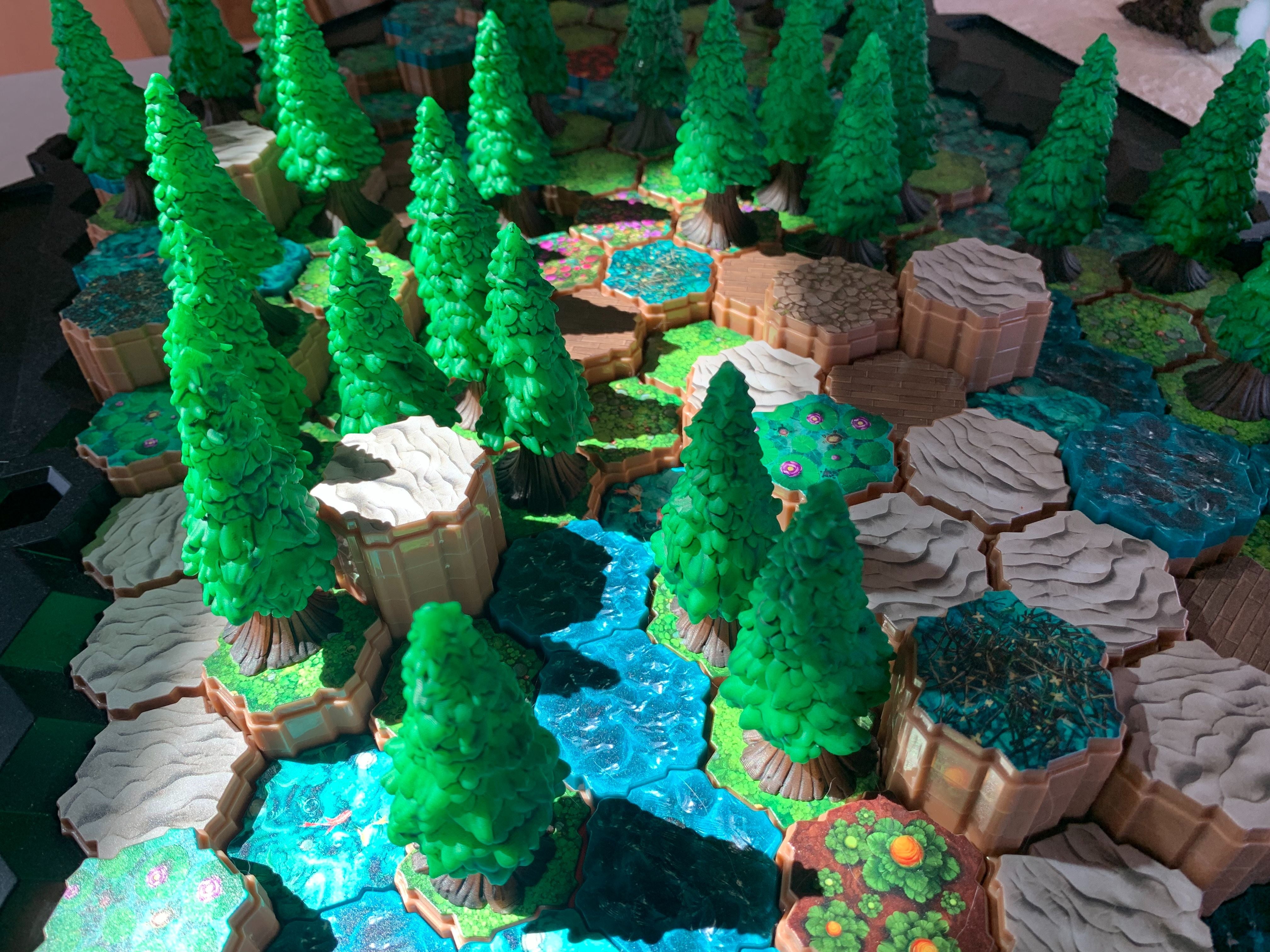The Resurgence of Family Board Games in 2025
Board games have experienced an unprecedented renaissance in recent years, and 2025 has seen this trend accelerate dramatically. No longer relegated to dusty closet shelves or reserved for rainy days, tabletop gaming has evolved into a vibrant cultural phenomenon that bridges generational divides while fostering genuine human connection. This resurgence reflects a collective yearning for authentic, screen-free interactions in an increasingly digital world.
What makes today's board gaming landscape particularly fascinating is its remarkable diversity. From boisterous party games that accommodate large gatherings to intimate two-player experiences perfect for couples or best friends, the modern board game ecosystem offers something for every relationship dynamic. The tactile nature of physical components—cards, tokens, miniatures, and boards—provides a refreshing counterpoint to our otherwise virtual existences.
As we delve into the reasons behind this renaissance, we'll explore how technological innovations, cultural shifts, and community-driven design have converged to create a golden age of family gaming. The contemporary board game isn't merely a product; it's a conduit for meaningful experiences and a catalyst for strengthening relationships.
- Why Family Board Games Are Trending in 2025: From Party Games to 2‑Player Gems
- The Resurgence of Family Board Games in 2025
- Digital Detox: The Analog Answer to Screen Fatigue
- Evolution of Party Games: Beyond Trivial Pursuit
- Accessibility Through Simplicity
- Cultural Relevance and Adaptability
- The Intimate Art of Two-Player Games
- Asymmetry: Different Paths to Victory
- Compact Design for Modern Living
- Community-Driven Innovation in Game Design
- Open-Source Revolution in Tabletop Gaming
- Mixed Reality: Blending Digital and Physical Play
- Family Games as Cultural Touchstones
- Representation and Inclusion in Gaming
- Intergenerational Bonding Through Play
- FAQs About Family Board Games in 2025
- How do I choose the right game for my family's specific dynamics?
- Are expensive games necessarily better than budget-friendly options?
- How can we maintain interest in our game collection over time?
Digital Detox: The Analog Answer to Screen Fatigue
In a world where digital interfaces mediate nearly every aspect of our lives, board games offer a compelling alternative—a tangible escape from the perpetual glow of screens. Many families have embraced tabletop gaming as a deliberate counterbalance to digital saturation, establishing "screen-free" evenings where phones are silenced, tablets are tucked away, and attention focuses entirely on face-to-face interaction.
Recent neurological research substantiates what many intuitively sense: analog activities engage different neural pathways than digital ones, potentially offering cognitive benefits that screen-based entertainment cannot replicate. The physicality of moving pieces, shuffling cards, and strategizing in three-dimensional space activates spatial reasoning and fine motor skills in ways that swiping and tapping simply don't.
This isn't merely nostalgia driving a retro trend; it's a conscious recalibration of leisure time toward experiences that foster presence and undivided attention. As digital natives mature into parenthood, many are deliberately integrating analog experiences into their family traditions, recognizing that the ephemeral nature of digital interaction often lacks the memorable quality of a hard-fought board game victory or a hilariously failed bluff.
Evolution of Party Games: Beyond Trivial Pursuit
The party game segment has undergone a remarkable metamorphosis, transcending the traditional trivia-based formats that dominated previous decades. Today's party games prioritize creative expression, social deduction, and hilarious interaction over mere knowledge recall, making them accessible to diverse groups regardless of educational background or trivia proficiency.
Game mechanics now deliberately foster moments of surprise, vulnerability, and shared laughter. Rather than testing what players know, modern party games often reveal who players are—their values, humor styles, and decision-making tendencies. This shift toward personality-driven gameplay has democratized the experience, creating a more inclusive environment where victory depends less on accumulated knowledge and more on social intelligence and creative thinking.
"Games in the party genre rely on the intrinsic value of humor, surprise, and creativity... Offering players a structured platform for humor offers intrinsic value that deserves a place on the metric board just as much as tangible points." — Alexia Mandeville, Game Designer
Accessibility Through Simplicity
Contemporary party games have mastered the delicate balance between depth and accessibility. Rulebooks have slimmed down, with many games embracing the "learn as you play" approach rather than requiring extensive pre-game preparation. This evolution acknowledges a fundamental truth: the barrier to getting a game to the table isn't just physical setup but mental overhead.
Designers have embraced elegant simplicity, creating games with intuitive rule structures that can be explained in minutes but offer enough strategic depth to sustain interest across multiple play sessions. This accessibility extends to physical design as well, with increased attention to color-blind friendly palettes, clear iconography, and components that accommodate varying levels of dexterity.
The result is a new generation of party games that can be spontaneously introduced at gatherings without the momentum-killing pause of extended rule explanations. This immediacy preserves the social energy that makes party games so appealing in the first place.
Cultural Relevance and Adaptability
The most successful party games of 2025 resonate with contemporary cultural touchpoints while avoiding the ephemerality that would render them obsolete within months. Many incorporate modular designs that allow for expansion and customization, ensuring longevity beyond the initial novelty.
Some games have embraced a hybrid approach, offering companion apps that refresh content while maintaining the essential physical interaction that defines tabletop gaming. This judicious integration of technology enhances rather than replaces the analog experience, allowing games to remain culturally relevant without abandoning their tactile essence.
User-generated content has emerged as another vector for maintaining cultural relevance, with many games incorporating mechanisms for players to create their own cards, scenarios, or challenges. This democratization of content creation ensures that games evolve organically alongside the communities that play them.
The Intimate Art of Two-Player Games
At the opposite end of the spectrum from boisterous party games lies the increasingly sophisticated world of two-player experiences. These games have undergone a remarkable evolution, shedding their historical reputation as mere "scaled-down" versions of larger games to emerge as purposefully designed experiences that exploit the unique dynamics of one-on-one play.
The intimacy of two-player interaction allows for game mechanics that would collapse under the weight of additional participants. Perfect information, direct competition, and psychological warfare flourish in this format, creating experiences of exceptional depth and intensity. For couples, close friends, or parent-child duos, these games offer a unique vehicle for connection, combining intellectual challenge with emotional engagement.
Market data reveals that two-player games represent one of the fastest-growing segments in the industry, reflecting changing household demographics and the practicalities of modern scheduling. Finding time to gather four or six players presents logistical challenges that the two-player format neatly circumvents.
Asymmetry: Different Paths to Victory
One of the most compelling innovations in two-player design is the embrace of asymmetry—games where opponents control fundamentally different forces with distinct abilities, victory conditions, and play styles. This approach transforms competition from a mirror match into a clash of contrasting strategies, often evoking the ancient chess principle of material imbalance but taking it to unprecedented extremes.
Asymmetric design creates replayability through role reversal; experiencing both sides of an asymmetric contest effectively doubles the game's content without requiring additional components. This efficiency makes such games particularly attractive to budget-conscious consumers seeking maximum value from their purchases.
The psychological dimension of asymmetric play adds another layer of engagement. Players must not only master their own faction's capabilities but develop an intuitive understanding of their opponent's strengths and vulnerabilities. This dual perspective cultivates empathy alongside competitive drive—a particularly valuable combination for parent-child gaming sessions.
Compact Design for Modern Living
Contemporary two-player games have embraced spatial efficiency, acknowledging the realities of urban living and smaller households. Many feature innovative storage solutions and table footprints measured in square inches rather than square feet. This physical compactness extends to play time as well, with many games delivering satisfying strategic depth in 30 minutes or less.
The "big box in small package" philosophy has become a design principle unto itself, with creators finding ingenious ways to maximize gameplay variety while minimizing physical presence. Nested components, dual-purpose cards, and modular boards all contribute to this efficient approach to game design.
This emphasis on compactness doesn't merely serve practical considerations; it creates games that can seamlessly integrate into daily life—played over breakfast, during lunch breaks, or as an evening ritual before bed. The best two-player games of 2025 don't demand special occasions; they enhance ordinary moments with extraordinary experiences.
Community-Driven Innovation in Game Design
Perhaps the most transformative aspect of the current board game renaissance is the democratization of game design itself. The traditional publisher-gatekeeper model has given way to a more permeable ecosystem where community input shapes games from concept to completion. Crowdfunding platforms, print-on-demand services, and open-source design tools have created unprecedented opportunities for indie creators to bring their visions to life.
This democratization has unleashed a torrent of innovation unconstrained by market conservatism. Games that might have been deemed too experimental or niche for traditional publishing channels now find their audiences directly, leading to a remarkable diversification of themes, mechanics, and perspectives represented in the market.
Open-Source Revolution in Tabletop Gaming
The open-source ethos that transformed software development has found fertile ground in tabletop gaming. Designers increasingly share core mechanisms, component templates, and even complete game systems under licenses that encourage adaptation and remixing. This collaborative approach accelerates innovation while fostering a sense of shared ownership within gaming communities.
Digital fabrication technologies—particularly 3D printing—have amplified this trend, allowing players to customize components, create expansions, or even produce entire games from freely available designs. The line between consumer and creator has blurred, with many game enthusiasts moving fluidly between playing published titles and developing their own variants or original concepts.
| Traditional Publishing Model | Community-Driven Model |
|---|---|
| Publishers as gatekeepers | Direct audience connection |
| Market-driven design decisions | Passion-driven design decisions |
| Fixed production runs | On-demand manufacturing |
| Standardized components | Customizable elements |
| Completed products | Evolving experiences |
Mixed Reality: Blending Digital and Physical Play
While pure analog experiences remain the core of family gaming, innovative designers have begun thoughtfully integrating digital elements to enhance rather than replace physical interaction. These mixed reality approaches maintain the essential tactile qualities of board games while leveraging technology to handle complex calculations, provide atmospheric enhancements, or enable novel game mechanics.
Unlike earlier attempts at digital integration that often felt gimmicky or superfluous, today's mixed reality games weave technological elements into their fundamental design. The digital components solve specific problems or enable experiences that would be cumbersome or impossible with purely physical components.
This technological symbiosis represents not a compromise but an evolution—recognizing that digital and analog modalities each offer unique strengths that can complement rather than compete with one another. The most successful implementations maintain the irreplaceable qualities of physical presence while judiciously employing digital tools to reduce friction and expand possibilities.
Family Games as Cultural Touchstones
Beyond their entertainment value, board games have emerged as significant cultural artifacts that reflect and sometimes challenge societal values. The themes, narratives, and mechanics embedded in games inevitably carry ideological content—whether explicitly or implicitly—making them powerful vehicles for cultural transmission across generations.
Contemporary game designers increasingly approach this responsibility with intentionality, considering the messages their games communicate about cooperation versus competition, resource management, conflict resolution, and historical narratives. Many families now select games not merely for their entertainment value but for the values they embody and the conversations they provoke.
Representation and Inclusion in Gaming
The past decade has witnessed a concerted effort to broaden representation within board games—both in terms of the characters and scenarios depicted and the perspectives represented among designers themselves. This evolution reflects growing recognition that games shape our understanding of whose stories matter and whose experiences count.
Games featuring diverse protagonists, exploring non-Western cultural contexts, or highlighting historically under-represented perspectives have found enthusiastic audiences. Many families specifically seek out games that expose children to a range of human experiences beyond their immediate cultural context, using tabletop play as a springboard for broader conversations about difference and commonality.
- Cultural representation in character design and narrative settings
- Accessibility considerations in physical components and rule complexity
- Diversity in creator teams and game narratives
- Multi-generational design that engages players of varying ages
- Multilingual support and cultural accuracy in theme treatment
Intergenerational Bonding Through Play
Perhaps the most profound social function of family board games is their ability to create meaningful connections across generational divides. Unlike many leisure activities that segregate by age, well-designed family games create a common ground where grandparents, parents, and children can engage as equals despite differences in life experience.
The structured environment of a game provides a framework for interaction that can bypass awkwardness or communication barriers. Victory and defeat, strategic choices, and moments of chance all generate shared emotional experiences that strengthen familial bonds. Many families report that their most candid and connected conversations occur during or immediately after gameplay sessions.
Game designers have responded to this phenomenon by creating experiences specifically calibrated for mixed age groups, incorporating mechanics that balance different types of skills and knowledge. The best intergenerational games create opportunities for each participant to contribute meaningfully regardless of age, leveraging different cognitive strengths across the human lifespan.
FAQs About Family Board Games in 2025
How do I choose the right game for my family's specific dynamics?
Consider your family's preferred interaction style—do they thrive on cooperation or friendly competition? Assess practical factors like typical available time, player count flexibility, and complexity tolerance. Many game stores now offer personalized recommendation services based on detailed family profiles, and online algorithms can suggest titles based on previously enjoyed games. Don't hesitate to start with shorter, simpler games and progressively explore more complex experiences as your family's gaming literacy develops.
Are expensive games necessarily better than budget-friendly options?
Price rarely correlates directly with quality of experience. Many exceptional games employ elegant design and modest components to deliver remarkable depth at accessible price points. Conversely, some expensive titles primarily justify their cost through lavish production values rather than superior gameplay. Focus on the match between game mechanics and your family's interests rather than component quality alone. The burgeoning print-and-play community offers high-quality designs at minimal cost for families willing to invest time rather than money.
How can we maintain interest in our game collection over time?
Establish regular gaming rituals while rotating through your collection to prevent overexposure to any single title. Consider implementing house rules that refresh familiar games, and explore expansions for beloved titles once the base game approaches exhaustion. Many games improve with repeated play as players develop deeper strategic understanding, so resist the urge to immediately acquire new titles when enthusiasm temporarily wanes. Finally, involve all family members in curation decisions to ensure everyone maintains a stake in the collection.
The renaissance of family board gaming represents more than a market trend—it signals a cultural shift toward valuing authentic connection in an increasingly fragmented social landscape. Whether gathered around a boisterous party game or engaged in the intimate dance of a two-player strategy contest, families are rediscovering the unique joy of shared play experiences. As technology continues transforming every aspect of daily life, the humble board game has emerged as both counterpoint and complement—a tangible anchor in our digital sea.



View Comments
Miniatures On-Demand: 3D Print Technology Changes Everything
Open-source tabletop gaming: modular hex terrain for your next D&D campaign
My family is definitely on the competitive side! There’s nothing quite like having your longest road stolen and blocked by grandma moments before victory. What kind of games does your family enjoy most? Let me know in the comments!